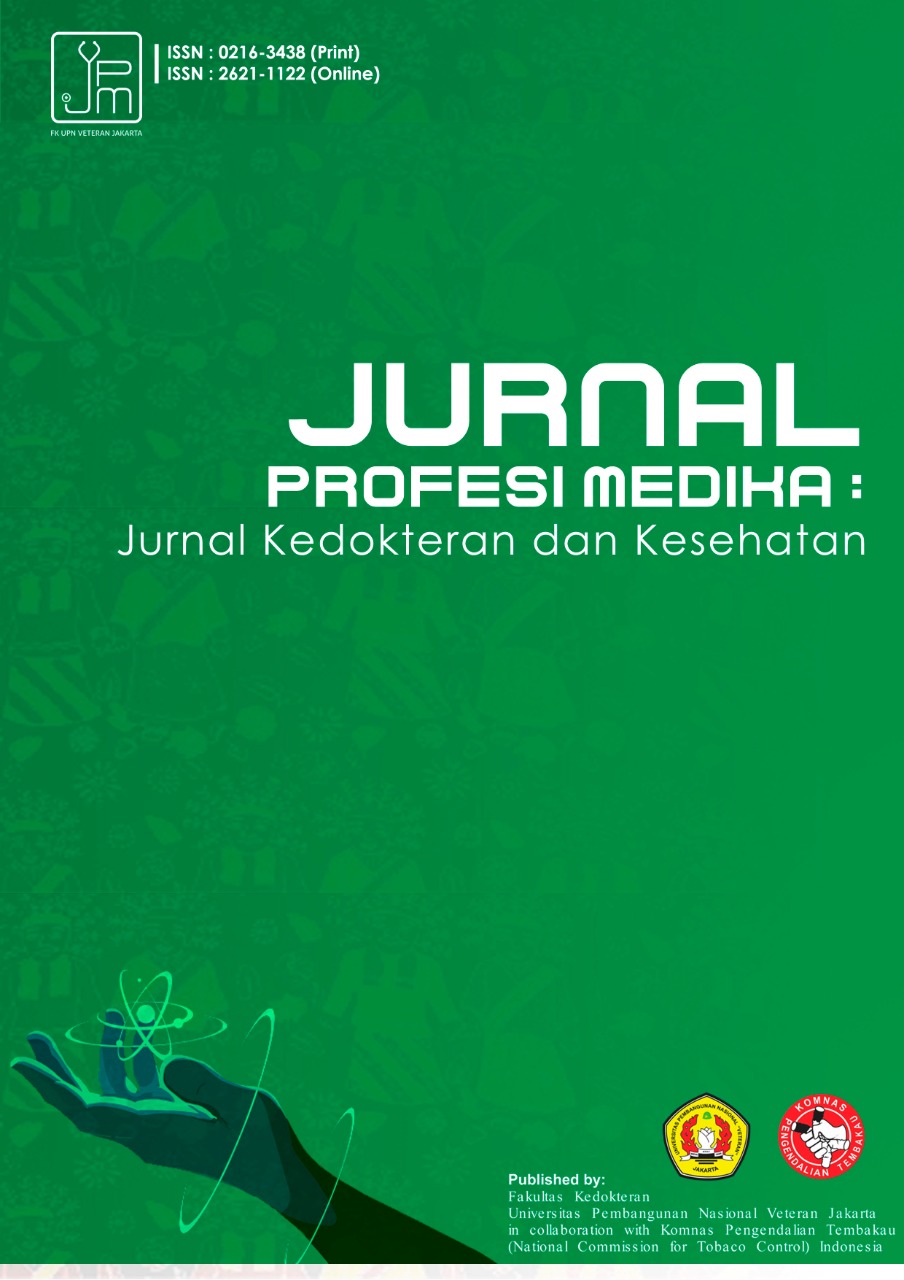Amaurosis Fugax Preceeding Central Retinal Artery Occlusion : a Case Report
DOI:
https://doi.org/10.33533/jpm.v16i1.4254Keywords:
amaurosis fugax, central retinal artery occlusionAbstract
Amaurosis fugax is a temporary condition characterized by transient visual loss which lasts several minutes or hours. This symptom can precede central retinal artery occlusion, which can cause permanent visual loss and bear several morbidity and mortality risks. We are reporting a case of a 59-year-old female with an unknown history related to risk factors who developed a painless vision loss in her right eye after experiencing similar symptoms for a short time. We describe the clinical features and other findings related to the diagnosis and discuss the further risk and management. Medical history, physical examination, and optical coherence tomography diagnosed acute central retinal artery occlusion. This includes a history of painless monocular vision loss, macular cherry-red spots, and papilledema. The diagnosis was confirmed by optical coherence tomography showing hyperreflectivity in the inner retinal layer, retinal edema, and hyperreflectivity in the outer retinal layer. Blood test including complete blood check, erythrocyte sedimentation rate (ESR), C reactive protein, lipid profile, and inflammatory markers within normal limit. The patient was then administered to further secondary vascular occlusion prevention, including a blood test, and referred to the neurology department for further examination. Early diagnosis and prompt treatment are necessary for this occlusive disease. A comprehensive examination to mitigate secondary vascular occlusion is needed to prevent morbidity and mortality.
References
Tadi P, Najem K, Margolin E. Amaurosis fugax. StatPearls [Internet]: StatPearls Publishing; 2021.
Rumelt S, Dorenboim Y, Rehany U. Aggressive systematic treatment for central retinal artery occlusion. American journal of ophthalmology. 1999;128(6):733-738.
Flores JP, Blanco GE, Rivas MP, Montero M, Breysse MM, Lluva ML. Central retinal artery occlusion and infective endocarditis: Rigor does matter. Archivos de la Sociedad Española de Oftalmología (English Edition). 2015;90(11):546-548.
Shaikh IS, Elsamna ST, Zarbin MA, Bhagat N. Assessing the risk of stroke development following retinal artery occlusion. Journal of stroke and cerebrovascular diseases. 2020;29(9):105002.
Brown SM. Stroke Risk and Risk Factors in Patients With Central Retinal Artery Occlusion. American Journal of Ophthalmology. 2019;200:252.
Chodnicki KD, Pulido JS, Hodge DO, Klaas JP, Chen JJ, editors. Stroke risk before and after central retinal artery occlusion in a US cohort. Mayo Clinic Proceedings; 2019: Elsevier.
Woo S, Lip G, Lip P. Associations of retinal artery occlusion and retinal vein occlusion to mortality, stroke, and myocardial infarction: a systematic review. Eye. 2016;30(8):1031-1038.
Bacigalupi M. Amaurosis fugax-A clinical review. Internet Journal of Allied Health Sciences and Practice. 2006;4(2):6.
Hayreh SS, Zimmerman MB. Amaurosis fugax in ocular vascular occlusive disorders: prevalence and pathogeneses. Retina. 2014;34(1):115-122.
Varma D, Cugati S, Lee A, Chen C. A review of central retinal artery occlusion: clinical presentation and Management. Eye. 2013;27(6):688-697.
Chen S-N, Hwang J-F, Chen Y-T. Macular thickness measurements in central retinal artery occlusion by optical coherence tomography. Retina. 2011;31(4):730-737.
Ahn SJ, Woo SJ, Park KH, Jung C, Hong J-H, Han M-K. Retinal and choroidal changes and visual outcome in central retinal artery occlusion: an optical coherence tomography study. American Journal of Ophthalmology. 2015;159(4):667-676.
Falkenberry SM, Ip MS, Blodi BA, Gunther JB. Optical coherence tomography findings in central retinal artery occlusion. Ophthalmic Surgery, Lasers and Imaging Retina. 2006;37(6):502-505.
Arnold M, Koerner U, Remonda L, Nedeltchev K, Mattle H, Schroth G, et al. Comparison of intra-arterial thrombolysis with conventional treatment in patients with acute central retinal artery occlusion. Journal of Neurology, Neurosurgery & Psychiatry. 2005;76(2):196-199.
Feltgen N, Neubauer A, Jurklies B, Schmoor C, Schmidt D, Wanke J, et al. Multicenter study of the European Assessment Group for Lysis in the Eye (EAGLE) for the treatment of central retinal artery occlusion: design issues and implications. EAGLE Study report no. 1. Graefe's Archive for Clinical and Experimental Ophthalmology. 2006;244(8):950-956.
Park SJ, Choi N-K, Yang BR, Park KH, Lee J, Jung S-Y, et al. Risk and risk periods for stroke and acute myocardial infarction in patients with central retinal artery occlusion. Ophthalmology. 2015;122(11):2336-2343.
Lavin P, Patrylo M, Hollar M, Espaillat KB, Kirshner H, Schrag M. Stroke risk and risk factors in patients with central retinal artery occlusion. American Journal of Ophthalmology. 2018;196:96-100.
Lee KE, Tschoe C, Coffman SA, Kittel C, Brown PA, Vu Q, et al. Management of acute central retinal artery occlusion, a "retinal stroke": an institutional series and literature review. Journal of Stroke and Cerebrovascular Diseases. 2021;30(2):105531.
Downloads
Additional Files
Published
How to Cite
Issue
Section
License
Copyright Notice
All articles submitted by the author and published in the Jurnal Profesi Medika : Jurnal Kedokteran dan Kesehatan, are fully copyrighted by the publication of Jurnal Profesi Medika : Jurnal Kedokteran dan Kesehatan under the Creative Commons Attribution-NonCommercial 4.0 International License by technically filling out the copyright transfer agreement and sending it to the publisher
Note :
The author can include in separate contractual arrangements for the non-exclusive distribution of rich versions of journal publications (for example: posting them to an institutional repository or publishing them in a book), with the acknowledgment of their initial publication in this journal.
Authors are permitted and encouraged to post their work online (for example: in an institutional repository or on their website) before and during the submission process because it can lead to productive exchanges, as well as earlier and more powerful citations of published works. (See Open Access Effects).






